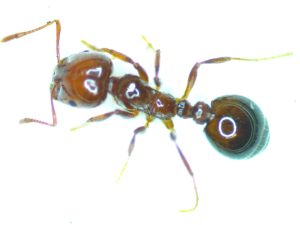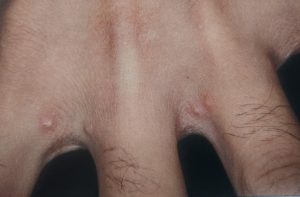They are strong and aggressive. When they attack, they bite and they sting you. These guys invade our homes, and take over our farms and landscapes, and they do this without us even noticing: they are Red Imported Fire ants.
What are Imported Fire Ants and Where Did They Come From?
Imported ants are a common pest in the Southeast Region of the USA. There are 2 species of imported fire ants: the red imported fire ant (Solenopsis invicta Buren) and the black imported fire ant (Solenopsis richteri Forel). The black imported fire ant is confined to places like Mississippi, Alabama, and Tennessee in the southeast of the USA. The red imported fire ant (RIFA) is distributed in many states in the southeast region including Texas, Oklahoma, Arkansas, Louisiana, Mississippi, Tennessee, Alabama, Georgia, Florida, and the Carolinas.
In Florida, there are two types of fire ants: the native fire ant (Solenopsis geminata) and the already mentioned red imported fire ants (RIFA). RIFA came from South America in the 1930s and was first reported entering ports in the Florida Panhandle coming in from Brazil.
How Can I identify RIFA?
RIFA are insects. As all other species of their kind they have 3 body parts (head, thorax, and abdomen) and 3 pairs of legs. They also undergo complete metamorphosis, meaning they have 4 stages in their life cycle (egg, larva, pupa, and adult). RIFA has 4 types of adult specimens or casts:
- Winged males – Distinguished from females by their smaller heads and black bodies. Males mate with fertile winged females to produce new laying queens.

- Red-brown winged females – Fertile females that haven’t mated. They lose their wings after mating and find a place to start a new colony.
- Queens – Mated females that are actively laying eggs. There could be one or more queens per nest.
- Workers – They protect the queen and nest, take care of the brood (undeveloped ants such as eggs, larvae, and pupa) and they also forage for food.
Workers ants consist of different sizes (polymorphic) between 1/8 to 1/4 inches. Their mandibles have four distinct teeth, and the antennae are 10-segmented, ending in a two-segmented club. A stinger is present at the tip of the gaster (abdomen or third segment). Body color is usually red to brown with a black gaster.
Mounds are built of soil and are seldom larger than 18 inches in diameter. When a mound is disturbed, ants emerge aggressively to bite and sting the intruder. If you are stung, a white pustule usually appears the next day at the site of the aggression.

It is important to distinguish between the RIFA and the native fire ant in order for appropriate control measures to be taken.
Mounds of S. geminata will contain workers with square-shaped heads that are larger in proportion to the rest of their body.
These workers collect and mill seeds for the colony. Workers of S. invicta do not have workers with disproportionate head-to-body ratios.
New colonies are formed when a mated queen burrows into the ground and lays eggs. Once the first generation of workers emerges, they begin foraging above ground for food to feed the queen and the developing brood. Within 30 days, larger workers have emerged, and the colony begins to grow. Within six months several thousand workers can occupy the colony and a “mound” is readily visible. The queen can live up to seven years and produces an average of 1,600 eggs per day throughout her life. At maturity, a fire ant colony can consist of over 250,000 ants.

What Damage Do They Cause?
Fire ants could prey on other pests such as chinch bugs, cockroaches, caterpillars, and others, although the problems they create often surpass their benefits. Fire ants interfere with outdoor activities and can harm wildlife (especially to ground-nesting species such as bobwhite quails). Their stings can cause serious medical issues, and mounds in landscapes could reduce the aesthetic value of properties.
Fire ants can present challenges in an agricultural setting. They feed on germinating seeds and can girdle the stems and trunks of young fruit trees. Tunneling fire ants can damage potato tubers and peanuts. During drought, crop damage can increase as fire ants seek alternate water sources. In drip irrigation systems, fire ants will build their mounds over the emitters, reducing or blocking the flow of water to crops. Fire ants are attracted by electrical currents and have caused considerable damage to pumps and other electrical equipment.
Many ants also feed on honeydew secreted by several groups of insects such as aphids, whiteflies, and soft scales. Ants often defend aphid populations in search of honeydew. Infestations with sap-feeding pests are often identified by observing ants moving up and down on plants.

How I Can Control RIFA?
There are a few methods that can work to control RIFA:
Individual mound treatments or broadcast treatments:
Individual mound treatments – This method should be used when a few mounds are detected. There are many methods of treating individual mounds. Some of these include mound drenches, surface dusts, mound injections, and baits.
Broadcast treatments – This method should be used when there are multiple mounds distributed across a specific location. Currently, there are few products available for the treatment of large areas. These products are either granular insecticides or baits. Baits are composed of soybean oil and a toxicant on a corn grit carrier. These granules can be broadcasted over large areas upon the discovery of RIFA. Worker ants will harvest these baits and bring them into the colony to feed the queens and larvae.

Depending on your operation you will be able to use specific insecticides which have been labeled for your crop or situation. Always read the label before using any pesticide, to make sure it is safe to use on your crops. When using pesticides take into consideration the following:
- Follow the product labels before applying. This will include what are the rates of application, equipment to be used, personal protective equipment to be used, and on what crops the product is safe to use, among other directions.
- If using baits, use fresh product, preferably from an unopened container.
- Apply baits with a spreader or other suitable equipment rather than by hand.
- Don’t apply baits mixed with seed or fertilizer.
- On broadcast applications, apply when there is a small to no chance of rain for the next 24 to 48 hours.
Biological control:
Biological control agents for imported fire ants include predatory mites, parasitic nematodes, parasitic flies, and the fungus Beauvaria bassiana. Scientific studies are being conducted to evaluate the effectiveness of some of these natural enemies, but others remain untested or have not been shown to be highly effective.
Fire Ant Decapitating Flies (also known as scuttle flies, hump-backed flies, and phorid flies; Pseudacteon spp.) are parasitoid flies of ants in the genus Solenopsis, which includes RIFA. In 1997 a species of Fire Ant Decapitating Fly (Pseudacteron tricuspis) was released in the US followed by a release of five other species.

Conclusion
RIFA could become a problem when not controlled. Although there are not many effective ways of completely eliminating RIFA, it is our responsibility to lower their population to minimize the damage they can cause to our crops and landscapes.
For more information about RIFA please read the following “Ask IFAS” publications:
Red Imported Fire Ant, Solenopsis invicta Buren (Insecta: Hymenoptera: Formicidae: Myrmicinae)
Managing Imported Fire Ants in Urban Areas
Fire Ant Decapitating Flies Pseudacteon spp. (Insecta: Diptera: Phoridae)
University of Florida Is an Equal Opportunity Institution
 1
1
